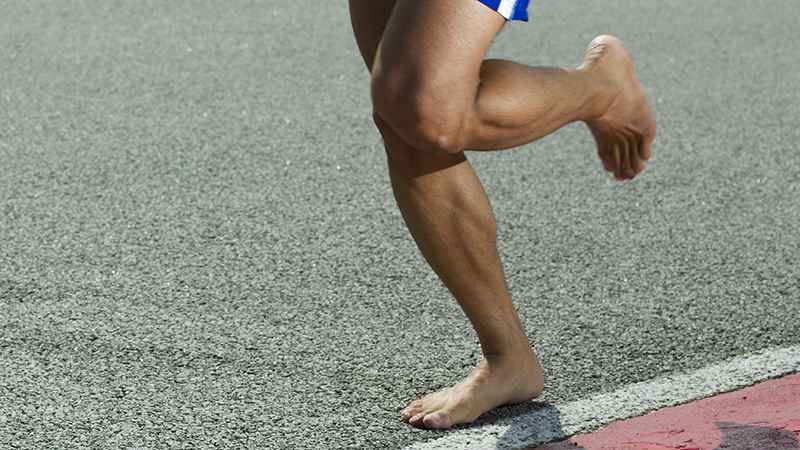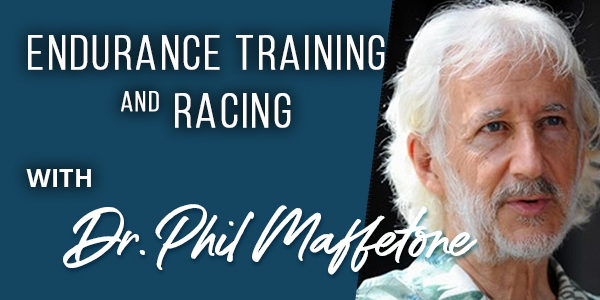
The 2-hour marathon barrier will be broken soon, and the runner to break it may be the one bold enough to race barefoot.
Could a shoeless marathoner really go under two hours?
The two-hour marathon barrier will be broken soon, and there’s a real likelihood it will be broken by someone with an edge. Like other edges in sports, it will be something out of the ordinary. In this case, it could be someone who defies the shoe companies, forgoes the short-term money, and runs barefoot.
There’s a reason some of today’s great runners, especially the East Africans — who grew up barefoot and may have developed significantly better speed because of it — don’t go unshod. It’s because of shoe-company contracts. Money talks, as they say, or in this case some may just take the money and run. But simple math could soon play a role here, as an annual shoe sponsorship of $20,000, $40,000 or even $80,000 or more, is really a pittance compared to the fortune the greatest marathoner of all time will be worth — it could be 100 times that or more.
Shoes are a dilemma, a difficult situation that will not go away because most athletes use footwear in most sports. The common problem associated with all footwear is that shoes reduce movement economy. Finding the best-fitting footwear will result in reducing the extent of the lost economy. But eliminating the shoe altogether could allow an athlete to get the most from the feet. Improvement in running economy leads to faster race paces — shoes can’t help one run faster. Dr. Mercer Rang, legendary orthopedic surgeon and researcher said that,“Shoes do no more for the foot than a hat does for the brain.”
Among the marvels of human physiology is the return-energy system in the feet. We actually take gravitational impact forces — the pounding of each step into the ground — and convert it to more useful energy that propels us forward. As a runner’s foot hits the road, impact energy is first stored in the muscles and tendons. Quickly, 95 percent of this energy is then used to help spring the body forward like a pogo stick. This mechanism astoundingly provides about half the energy required for leg and foot muscle propulsion, with the other half coming from a combination of fat and sugar.
This is more than extra energy. It’s what separates the lead pack from those trailing behind. Just by significantly improving this “recoil energy,” a 2:04 marathoner may be within reach of 1:59 right now. Without shoes.
Shoes impair this important return-energy process in a number of common ways, resulting in some or much of the impact energy dissipated and lost:
- Promoting heel-strike instead of mid- or forefoot strike.
- Allowing over-striding.
- Not properly or precisely matching the foot.
- Promoting muscle imbalance in the legs or feet.
Impairment of the return-energy process requires the runner to make up for this deficit by contracting muscles, using more energy from body stores. The result is that running economy is reduced, the gait worsens, and, as an adaptation, the pace slows.
Another limiting factor is the weight of shoes. Each ounce reduces running economy, slowing race pace. How much can shoe weight add to one’s marathon time? This could be about a minute or more for every 3.5-ounces of shoe, and most running shoes are five ounces or more.
Every competitor at every level in every sport seeks an edge. It’s as much a part of the journey as the ultimate performance goal — an intense battle of intellectual and emotional searches every athlete goes through, sometimes only hidden deep inside. Coaches and athletes comb through the scientific literature and online blogs, while quietly seeking the key from the latest winner.
But the secret of the edge is an illusion, at least in how it is commonly perceived. Our real edge is being human — the proof is that we are still here as a species. Today’s human endurance athletes take survival for granted, and are free to enjoy competitive events that regularly take place around the globe. A very small number of runners make a good living by performing. In most cases, there’s a direct correlation between race pace and purse.
The ultimate race is now counting down. Like breaking the 4-minute mile, seen as an athletic impossibility in the years leading up to that famous day on May 6, 1954, when Roger Gilbert Bannister ran 3:59.4, the two-hour marathon barrier stands waiting to be broken. This feat will be beyond the marvel of a world record, an Olympic gold, or World Championship. The first to 1:59 will achieve much more. He will be crowned a king, a god, and will be sought after for worldly opinions, training tips, and, of course, the edge he must surely have had.
A man will do it first, followed by a woman years afterwards, perhaps around the time of another key woman’s feat: the first female sub four-minute mile.
The real question is who will be bold enough to forgo today’s relatively small stipends from shoe companies and stride unshod into future athletic eminence and fortune?
Dr. Phil Maffetone








